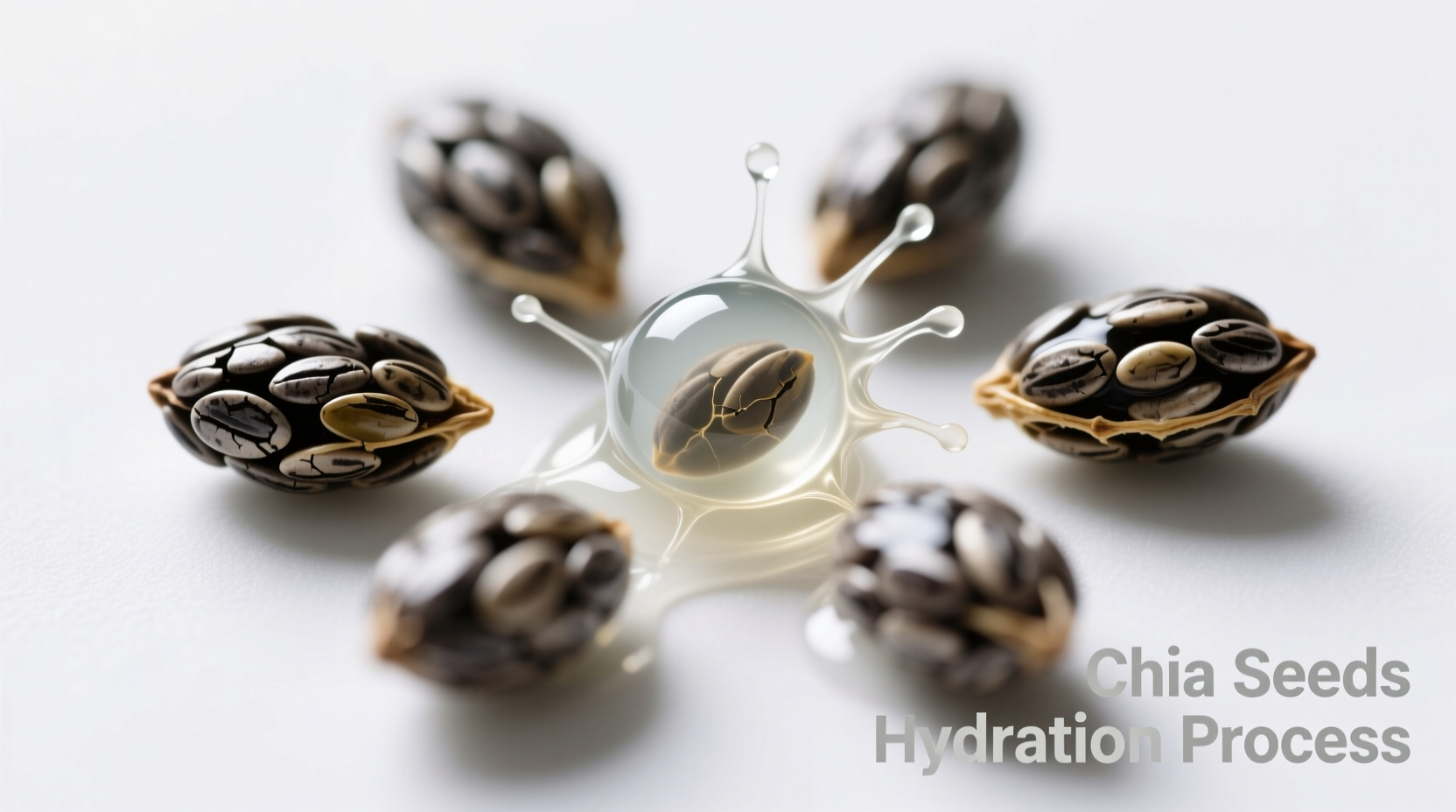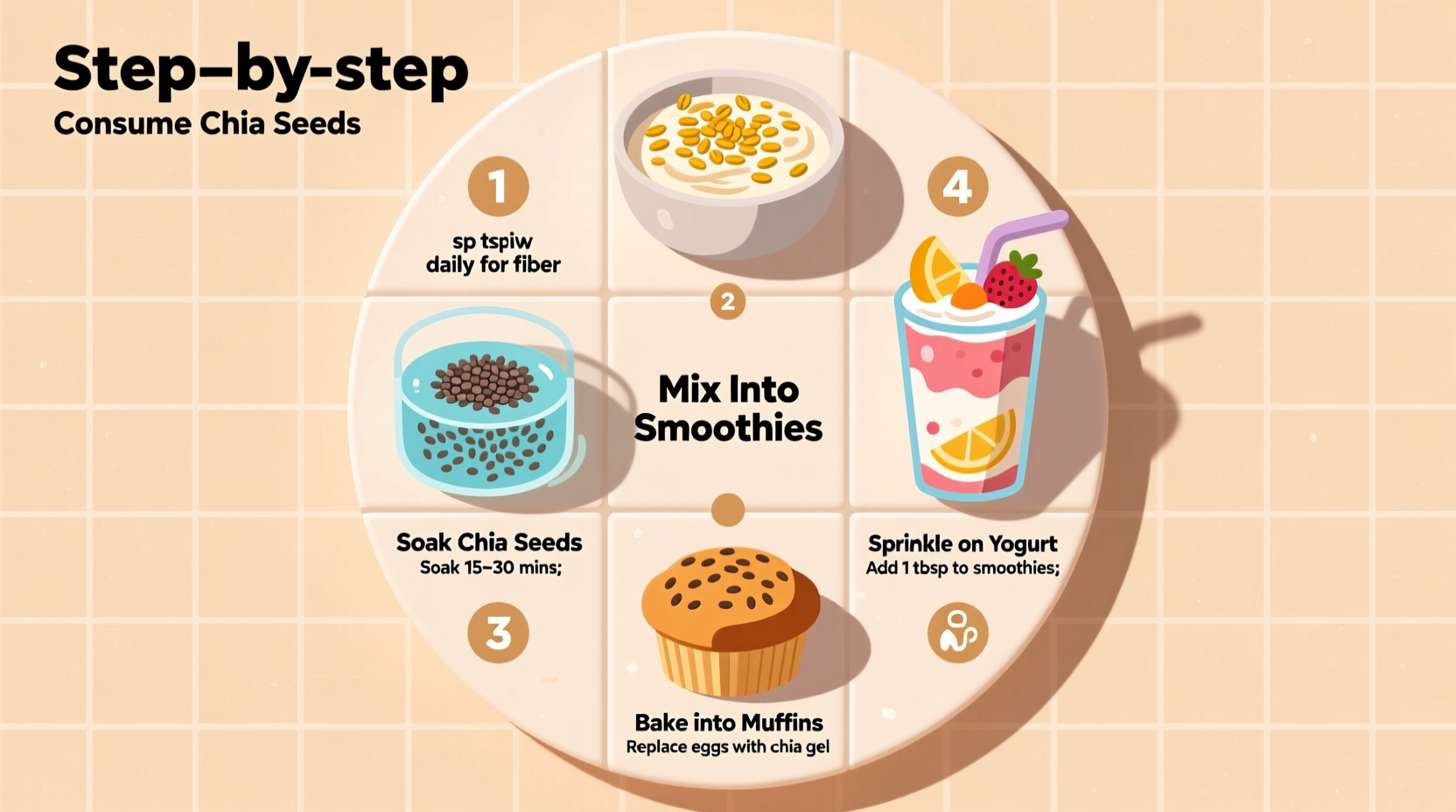Chia seeds pack a powerful nutritional punch when prepared correctly. As a culinary expert who's worked with superfoods across professional kitchens, I've discovered that proper preparation transforms these tiny seeds from indigestible particles into a nutritional powerhouse. Forget complicated recipes—mastering chia seed consumption comes down to understanding their unique hydrophilic properties and applying simple techniques anyone can implement.
Why Proper Chia Seed Preparation Matters
Chia seeds contain up to 11 grams of fiber per ounce, but consuming them dry can lead to digestive discomfort and reduced nutrient absorption. When chia seeds meet liquid, they form a gel-like coating through a process called hydrogel formation. This natural transformation:
- Prevents potential choking hazards
- Enhances soluble fiber benefits for gut health
- Improves absorption of omega-3 fatty acids
- Creates sustained energy release
According to research published in the Journal of Food Science, properly hydrated chia seeds demonstrate 30% better nutrient bioavailability compared to dry consumption. The National Institutes of Health confirms that adequate hydration when consuming high-fiber foods like chia seeds prevents potential gastrointestinal issues.
Step-by-Step Chia Seed Preparation Methods
Basic Hydration Technique (The Foundation)
This fundamental method works for all applications:
- Measure 1 tablespoon of chia seeds
- Add to 3 tablespoons of liquid (water, milk, or plant-based alternative)
- Stir immediately to prevent clumping
- Cover and refrigerate for 15-30 minutes
- Stir again before use
The seeds will absorb liquid and form a gel-like consistency. For thicker results (like puddings), use a 1:6 seed-to-liquid ratio and allow 2 hours for complete hydration.

Daily Consumption Guide
| Consumption Method | Daily Amount | Best Time | Hydration Requirement |
|---|---|---|---|
| Basic hydration | 1-2 tbsp dry seeds | Morning | 3x liquid volume |
| Smoothie addition | 1 tbsp pre-soaked | Anytime | Already hydrated |
| Baking substitute | 1 tbsp per egg | N/A | 1/4 cup liquid |
| Salad topping | 1 tsp dry | With meal | Extra water with meal |
Advanced Consumption Strategies
Chia Pudding Mastery
Create nutrient-dense breakfasts with this simple formula:
- Combine 3 tbsp chia seeds with 1 cup liquid (almond milk works well)
- Add 1/4 tsp vanilla extract and optional sweetener
- Refrigerate overnight
- Top with fresh berries and nuts before serving
Pro tip: Layer chia pudding with fruit compote for a parfait that provides sustained energy for 6+ hours. The Academy of Nutrition and Dietetics recommends this approach for maintaining stable blood sugar levels throughout the morning.
Chia Eggs: The Perfect Vegan Substitute
Replace eggs in baking with this simple alternative:
- Mix 1 tbsp chia seeds with 2.5 tbsp water
- Let sit for 5 minutes until gel forms
- Use in place of one standard egg
This works particularly well in muffins, pancakes, and quick breads. Unlike flax eggs, chia eggs maintain stability at higher temperatures, making them versatile for various baking applications.
Critical Safety Considerations
While chia seeds offer numerous health benefits, certain populations should exercise caution:
- Digestive sensitivity: Start with 1 teaspoon daily and gradually increase
- Medication interactions: Space consumption 2+ hours from medications due to fiber content
- Swallowing concerns: Never consume dry chia seeds without adequate liquid
- Blood thinners: Consult your physician before regular consumption
The Mayo Clinic specifically warns that consuming dry chia seeds without sufficient liquid can cause esophageal constriction in susceptible individuals. For optimal safety, always hydrate chia seeds before consumption or ensure adequate water intake when using them dry as toppings.
Maximizing Nutritional Benefits
Pair chia seeds with complementary foods to enhance their nutritional profile:
- Vitamin C sources: Combine with citrus fruits to boost iron absorption
- Healthy fats: Mix with avocado or nuts to improve fat-soluble vitamin uptake
- Protein pairing: Add to Greek yogurt for complete amino acid profile
Research from the USDA FoodData Central shows that chia seeds contain all nine essential amino acids, making them a complete protein source when properly prepared. Their omega-3 to omega-6 ratio (3:1) aligns perfectly with dietary recommendations for reducing inflammation.
Common Mistakes to Avoid
Even experienced users make these preparation errors:
- Insufficient liquid: Using less than 3:1 liquid ratio prevents proper gel formation
- Skipping the stir: Not stirring during initial hydration causes clumping
- Overconsumption: Exceeding 2 tablespoons daily may cause digestive upset
- Dry consumption: Eating dry seeds without adequate water intake
Remember that chia seeds expand to 10-12 times their original size when hydrated. The American Heart Association recommends starting with small portions and monitoring your body's response before increasing intake.
Storage and Freshness Tips
Preserve chia seeds' nutritional value with proper storage:
- Store in airtight container away from light and heat
- Refrigerate after opening for maximum freshness
- Hydrated chia mixtures keep for 5 days refrigerated
- Freeze chia pudding in individual portions for quick breakfasts
Unlike flax seeds, chia seeds maintain stability at room temperature due to their natural antioxidant content. However, refrigeration extends their shelf life and preserves delicate omega-3 fatty acids.











 浙公网安备
33010002000092号
浙公网安备
33010002000092号 浙B2-20120091-4
浙B2-20120091-4